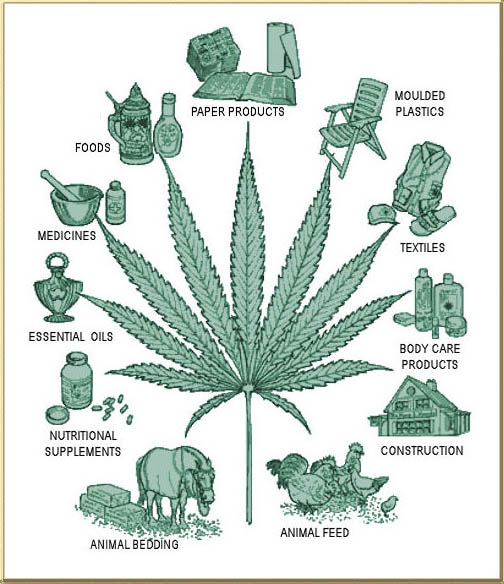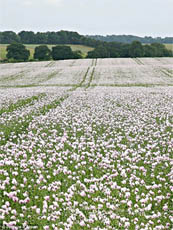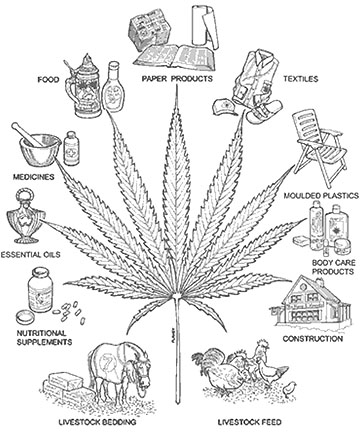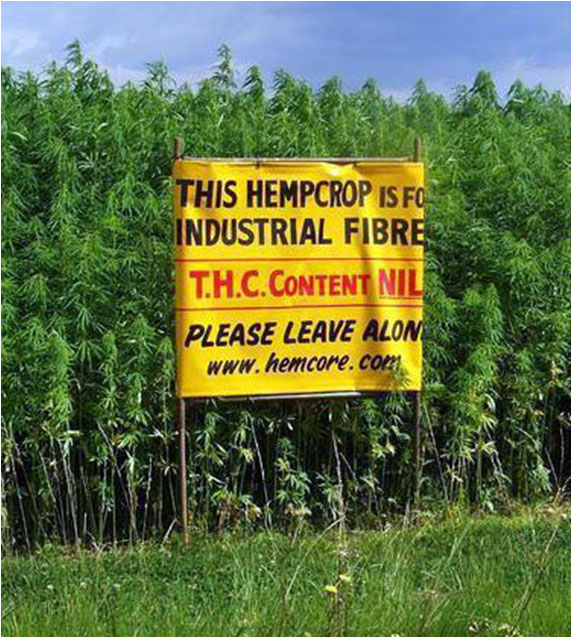There was a bit of excitement in the enviro blogworld last year, with posts boasting titles like “President Signs Farm Bill Legalizing Hemp” and “U.S. House of Representatives Votes to Legalize Industrial Hemp.” The legislation, some say, is a byproduct of the legalization of marijuana in some states, even though the two are vastly different with the main difference being that you can’t get high from hemp.
The Farm Bill legislation’s potential impact was overstated. It allowed growth only for research purposes by states and colleges, and even that turned out to be thwarted by the DEA.
The reason the federal government made hemp growth illegal is the subject of several theories. The most often cited is that the DEA can’t see the difference between the two when they are looking for marijuana farms. A more conspiratorial theory holds that the cotton industry, fearing competition, was behind the ban.
Last year brought attempts to finally legalize the potentially lucrative crop. Alas, the hoopla is not quite warranted.
I’ve written before about the fantastic qualities of hemp and how unfortunate – make that ridiculous – that it is illegal to grow in the US. In that 2012 post, I noted a bill that would rectify the situation. The bill was even co-sponsored by a Republican. That legislation failed. 2014 brought similar attempts to legalize a situation that has already been legalized in many states despite the federal ban.
Unfortunately, a Republican controlled Congress is even less likely to pass legislation in 2015. This despite the fact that hemp farming is seen by many as a job creator – which should make it a Republican darling — and, by the libertarian branch of the party, the ban is regarded as unnecessary government regulation.

Image source: relegalize.info
As I noted in the previous post regarding hemp, it is incredibly versatile. Until 1619, farmers in Virginia were required to grow it. During WWII, its growth was temporarily legalized because of the military need for products made from it, including rope and parachutes. The federal government promoted a “Hemp for Victory” program.
Currently it is legal to make products in the US utilizing hemp, but illegal to grow the raw material. Much of it instead is imported from Canada, where growing it is allowed.
This blog is about synergistic environmental and economic solutions. In addition to hemp’s value to both farmers and the economy, it is a hardy crop, light in water and nutrient and fertilizer requirements. That qualifies hemp legalization as a perfect EcoOptimism win-win-win topic.
But despite the WWII precedent, despite the increasing understanding that hemp is not marijuana, and despite the combined economic and environmental logic behind legalization, 2015 is unlikely to see positive movement on federal legislation. For that, we’ll probably have to wait until at least 2017 and a new Congress, hopefully with an enlightened President. Not a very EcoOptimistic conclusion, but still there’s hope.





